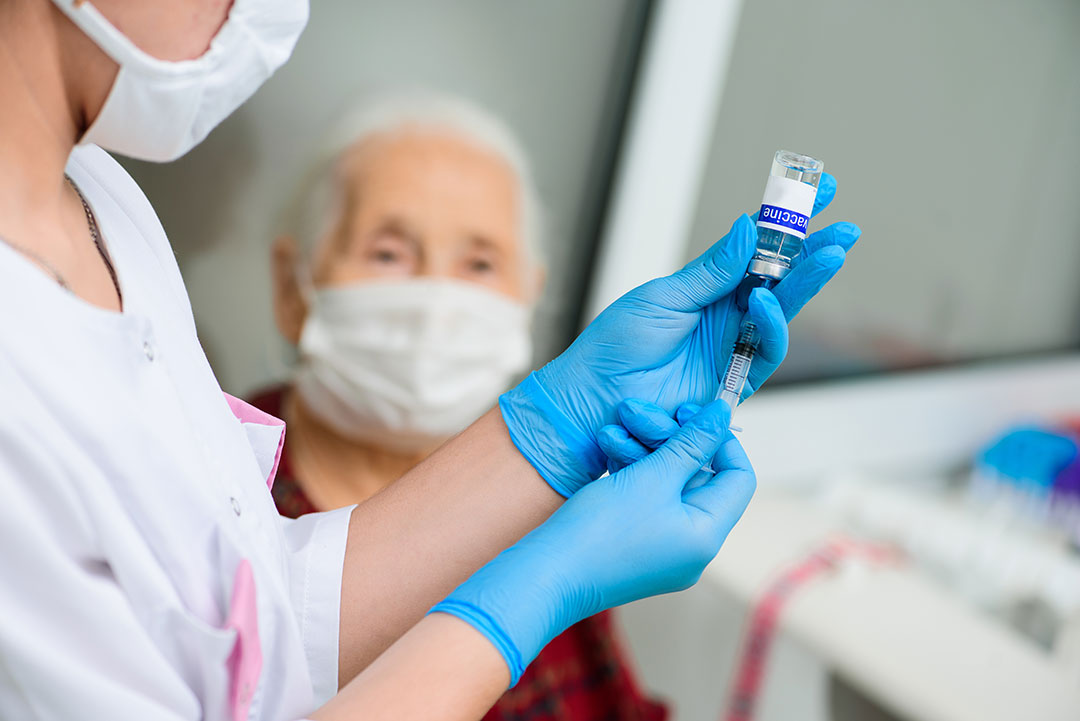Vaccines without needles could have numerous benefits, but require further investment
Microarray patches could overcome many of the logistical obstacles hindering measles and rubella elimination, but manufacturing facilities are urgently needed to produce them.
- 11 March 2022
- 5 min read
- by Linda Geddes

For those afraid of needles, vaccine patches may sound like a godsend, painlessly delivering lifesaving doses into the skin through hundreds to thousands of micro projections. But so-called micro-array patches could have numerous other benefits – particularly for vaccine delivery in low- and middle-income countries.
“This is a critical opportunity for global public health that cannot afford to be missed.”
In a new research paper, published in Frontiers in Public Health, the WHO’s Mateusz Hasso-Agopsowicz and colleagues outline the advantages of delivering measles and rubella vaccines through microarray patches, and how investment in manufacturing facilities could also benefit delivery of other vaccines, such as influenza.
Advantages of micro-array patches
Vaccination against measles prevents more child deaths and offers a greater return on investment than any other vaccine, yet gaps in coverage resulted in more than 200,000 deaths globally in 2019. This figure is expected to rise as the COVID-19 pandemic continues to disrupt vaccine delivery.
Current measles and rubella vaccines supplied to low- and middle-income countries are packaged in five- or ten-dose vials and need to be kept refrigerated during storage and transport. They must then be reconstituted and delivered by skilled healthcare workers, with any unused vaccine discarded six hours after preparation.
All of this can result in precious doses being wasted, due to logistical failures; errors in storage, preparation or administration, or children being refused vaccination at clinics because a vaccine vial might not be open and the vaccine isn’t ready for administration.
Microarray patches could help to overcome many of these problems, because they arrive ready to use, are expected to be more stable at non-refrigerated temperatures, and could potentially be delivered relatively painlessly by community health workers with limited training. As such, they could enable more children to be vaccinated in remote and challenging settings, such as war zones, humanitarian crisis regions, or to communities of refugees and displaced persons. Reaching more children in these settings could put the goal of eradicating measles within reach.
The unit cost of such vaccines is likely to be higher than currently available measles and rubella vaccines, but this could be partially offset through savings in programmatic delivery costs, as well as health and economic gains.
Progress towards developing them
Two measles and rubella micro-array patch candidates recently entered phase I clinical trials both to assess their safety and tolerability and the magnitude of people's immune responses to the vaccines.
One of these patches contains vaccine-coated micro projections, the other uses dissolving microneedles which gradually release the vaccine as they dissolve. Both of these platforms have demonstrated safety and clinical proof-of-concept with seasonal influenza vaccine, where they triggered equivalent or improved immune responses to conventional flu vaccines.
However, there’s still a way to go. Without immediate large-scale investment in pilot-scale manufacturing infrastructure, measles and rubella micro-array patches won’t be pre-qualified by the WHO before 2029 at the earliest, Hasso-Agopsowicz and colleagues said. Pre-qualification is the process through which the quality, safety and efficacy of new drugs and vaccines is assessed. It is a pre-requisite for Gavi financing and subsequent procurement by UNICEF.
To speed this process up, manufacturing facilities need to be built in parallel to the clinical development of these candidate vaccines. However, manufacturers are not incentivised to do this until the vaccines show significant benefits in clinical trials and the demand for them is clear. Otherwise, there’s no guarantee of a return on their investment.
Have you read?
Possible solutions
One way of reducing the risk for manufacturers would be to construct a pilot manufacturing facility that could enable completion of pivotal studies necessary for the approval of measles and rubella micro-array vaccines, immediately after clinical proof of concept studies. This could also support early supply, and then be expanded to a commercial full-scale manufacturing facility once the demand to justify investment was sufficient. This could be built and qualified within three years at a cost of around $ 20 million to $ 40 million, Hasso-Agopsowicz and colleagues said.
These risks could be further reduced by ensuring this pilot facility was flexible enough to allow manufacture of related micro-array patches, such as a measles, mumps and rubella patch, or other vaccine or drug patches – although some active ingredients may require dedicated facilities.
Also needed is a strong commercial incentive for manufacturers, in the form of a clearly articulated demand for these products from recipient countries, and a clear financing strategy.
In 2020, the Gavi-led Vaccine Innovation Prioritization Strategy (VIPS) Alliance identified micro-array patches as the highest priority innovation to improve vaccine coverage and contribute to pandemic preparedness. It has since developed an integrated end-to-end (from product development to country uptake) strategy to hasten their availability, with input from vaccine manufacturers and developers.
Even so, further work is needed to quantify the full value of micro-array patches for recipient countries and communities, and to assess the feasibility of delivering micro-array vaccines for measles and rubella alongside conventional vaccines within the same immunisation programme.
“Measles and rubella micro-array patches are poised to contribute to realising the dream of measles eradication and reach the [roughly] 20 million children in every annual birth cohort that are currently missing out on life-saving measles and rubella vaccines,” Hasso-Agopsowicz and colleagues wrote. “This is a critical opportunity for global public health that cannot afford to be missed.”









